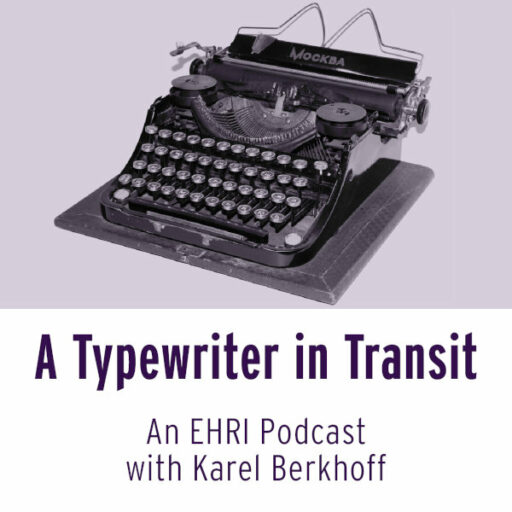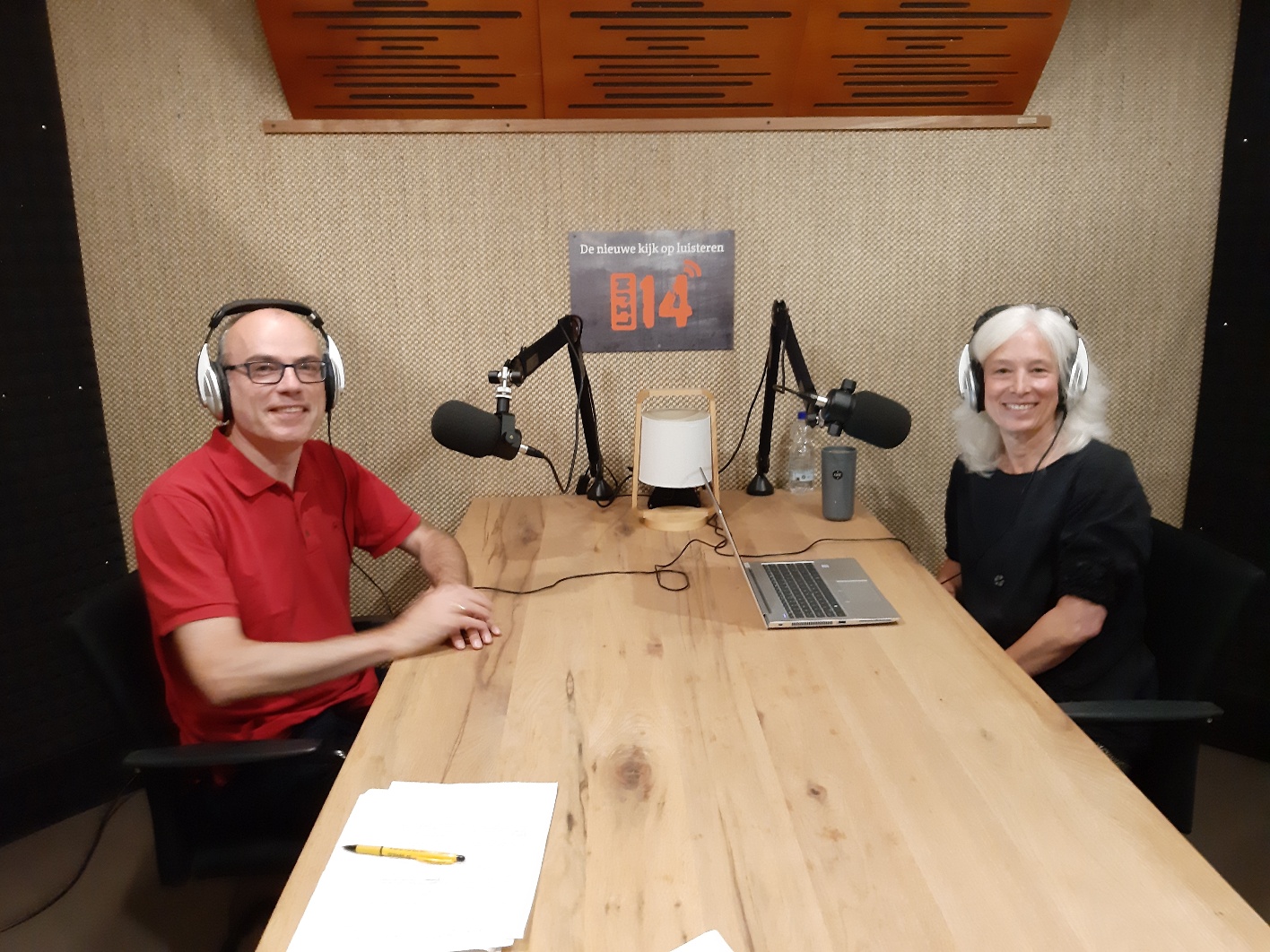Podcast Episode | A Typewriter in Transit

Release date: 29 September 2022 | More about the Podcast Series For the Living and the Dead. Traces of the Holocaust
On 19 September 1941, Kyiv, capital of Ukraine, was occupied by the Nazi’s. Before then, Ukraine had been a reluctant part of the Soviet Union. Shortly after Nazi-Germany took hold of the city, it was decided to annihilate the Jews of Kyiv. On 29 and 30 September 1941, the Nazis and their collaborators murdered approximately 33,771 Jewish civilians by shooting them at a nearby ravine, called Babyn Yar.
One of the main sources on the Babyn Yar massacre is the book Babi Yar. A Document in the Form of a Novel, by A. Anatoli (Anatoly Kuznetsov). Kuznetsov was born in Kyiv and fourteen years old at the time of Babyn Yar. Later he wrote an extensive eyewitness account, complemented with research, of wartime Kyiv (1941-1943) and what occurred at Babyn Yar. His typewriter is now part of the collection of the National Museum of the History of Ukraine in the Second World War.
Featured guest: Karel Berkhoff, Senior Researcher at the NIOD Institute for War, Holocaust and Genocide Studies in Amsterdam, Netherlands, and Co-Project Director EHRI. Podcast host is Katharina Freise.
Karel will talk about Babyn Yar and Kuznetsov. Listen to the episode on Buzzsprout, Spotify, Apple Podcasts or here:
Karel Berkhoff is a senior researcher at NIOD Institute for War, Holocaust and Genocide Studies and Co-Project Director of EHRI. He is historian of Eastern Europe (especially Ukraine and the Soviet Union) and the Holocaust. His research focus is the Holocaust in Kyiv, and especially the Babyn0 Yar massacre of September 1941). He is currently writing a book on “Babyn Yar in History and Memory”. It will tell the story of the murders in 1941-1943 at the ravine of Babyn Yar and the postwar obliteration of the killing and burial ground.

Anatoly Kuznetsov
‘This book contains nothing but the truth.
Whenever I used to tell parts of the story to people they would always, without exception, declare that I ought to turn it all into a book.
[I have in fact been writing that book for many long years. What might be called the first version was written when I was only fourteen. In those days, when I was just a hungry, frightened little boy, I used to write down in a thick, home-made notebook everything I saw and heard and knew about Babi Yar as soon as it happened. I had no idea why I was doing it, it seemed to me to be something I had to do, so that nothing should be forgotten.’
A. Anatoli (Kuznetsov), Babi Yar. A Document in the Form of a Novel (US 1970) 13.
These are the first lines with which Anatoly Kuznetsov started his book Babi Yar. A Document in the Form of a Novel. Kuznetsov began writing about wartime life in a notebook when he was only a teenager. After the war, with Ukraine being part of the USSR again, he continued working on it, adding documents and eyewitness testimonies.
Babi Yar was first published in Russian in a heavily censored magazine version in the Soviet Union in 1966. Very unhappy with life in the Soviet Union, Kuznetsov defected to the UK in 1968 and managed to take a 35-mm photographic film with the uncensored manuscript of Babi Yar with him. The book was published in the US in 1970 under pseudonym A. Anatoli. In that edition, the censored Soviet version was put in regular type, the content cut by censors in heavier type and newly added material was in brackets. The book had great impact on the knowledge of the massacre of Babyn Yar.
Kuznetsov died in 1979 in London. His typewriter was donated to the National Museum of the History of Ukraine in the Second World War by his son.
It is not possible to understand the current war in Ukraine without knowing about the country’s past.
Learn more
- The typewriter at the National Museum of the History of Ukraine in the Second World War
- The Ordeal of Anatoly Kuznetsov, CBS TV-interview, 1969 on YouTube
- More on the massacre at Babi Yar, Wikipedia
- EHRI Online Course in Holocaust Studies. 3. The Holocaust in Ukraine
- More about Anatoly Kuznetsov, Wikipedia
- A Yad Vashem Podcast with Karel Berkhoff “What happened at Babi Yar?”
- More about the book Babi Yar. A Document in the Form of a Novel, Wikipedia
- Kuznetsov’s Unmarked Grave in London, Index on Censorship
Credits
Our thanks go to:
- Karel Berkhoff
- Oleksandr Pasternak, Curator at the National Museum of the History of Ukraine in the Second World War in Kiev, Ukraine
- The National Museum of the History of Ukraine in the Second World War, Ukraine
- Andy Clark, Podcastmaker, Studio Lijn 14
- Music accreditation: Blue Dot Sessions. Tracks – Opening and closing: Stillness. Incidental, Gathering Stasis, Pencil Marks, Uncertain Ground, Marble Transit and Snowmelt. License Creative Commons Atttribution-NonCommercial 4.0 International (BB BY-NC 4.0).
This podcast episode is part of season 1 of the EHRI Podcast series For the Living and the Dead. Traces of the Holocaust. More episodes are released every other week in the autumn of 2022, six in total. In 2023, a new season wil follow.
